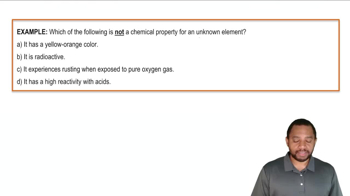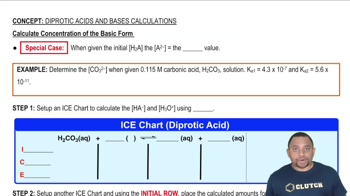Textbook Question
Determine the pH of an HNO2 solution of each concentration. In which cases can you not make the simplifying assumption that x is small? a. 0.500 M b. 0.100 M c. 0.0100 M
 Verified step by step guidance
Verified step by step guidance


Determine the pH of an HNO2 solution of each concentration. In which cases can you not make the simplifying assumption that x is small? a. 0.500 M b. 0.100 M c. 0.0100 M
Determine the pH of an HF solution of each concentration. In which cases can you not make the simplifying assumption that x is small? (Ka for HF is 6.8×10–4.) a. 0.250 M b. 0.0500 M c. 0.0250 M
A 0.185 M solution of a weak acid (HA) has a pH of 2.95. Calculate the acid ionization constant (Ka) for the acid.
Determine the percent ionization of a 0.125 M HCN solution.
Determine the percent ionization of a 0.225 M solution of benzoic acid.